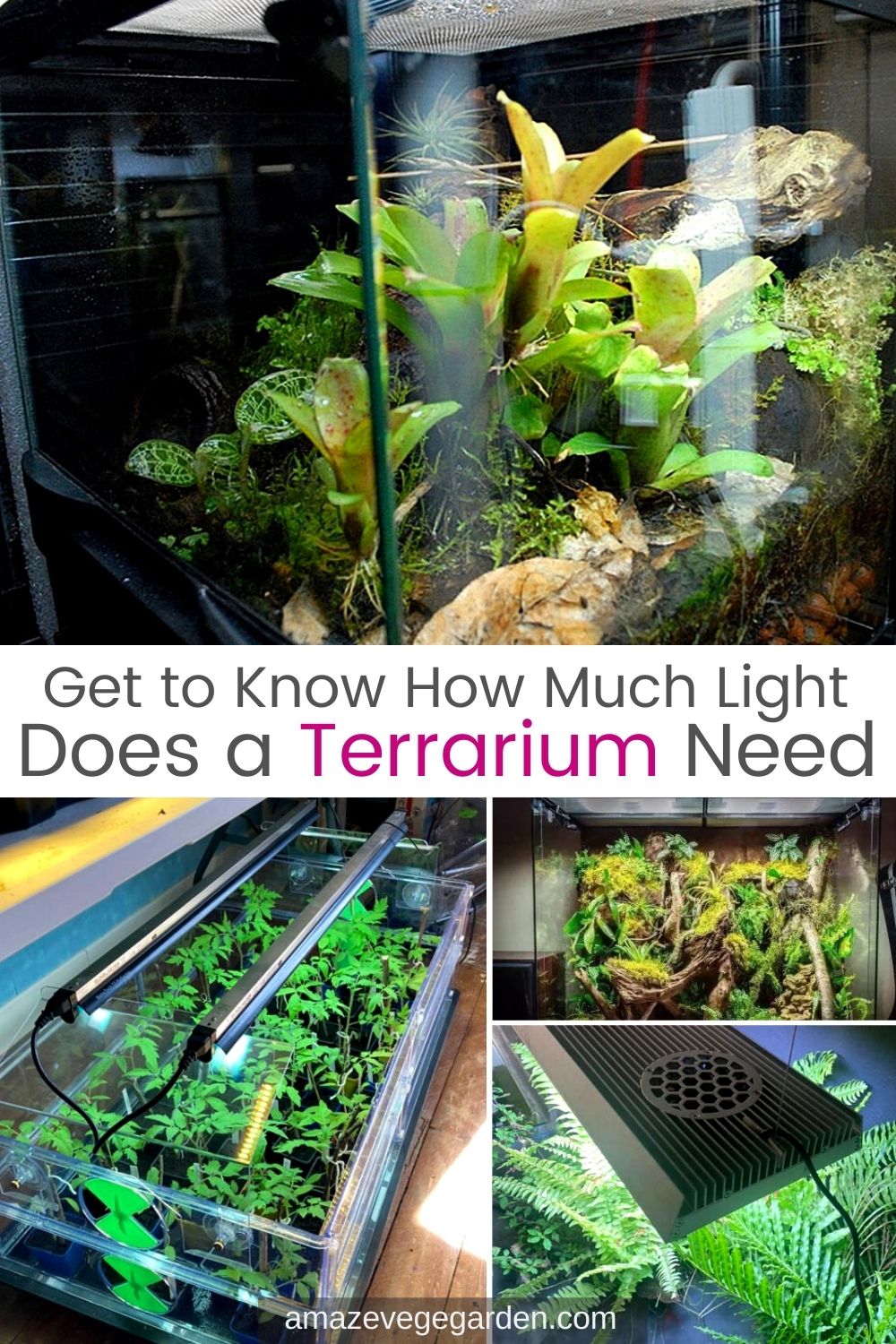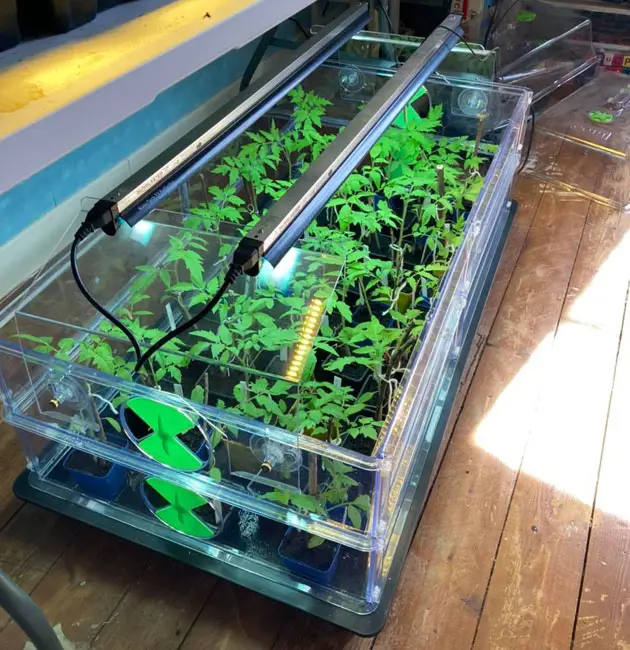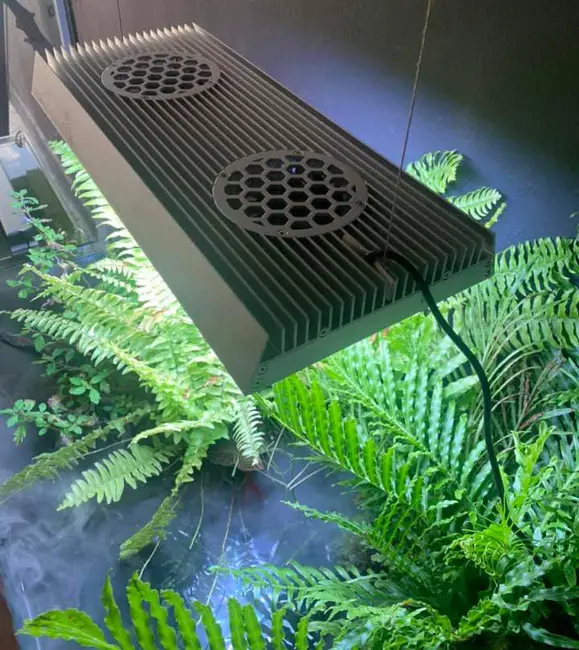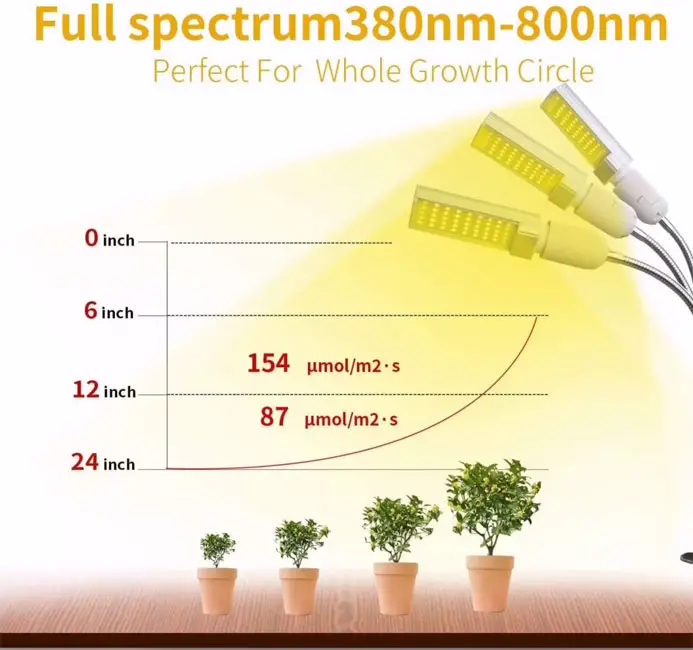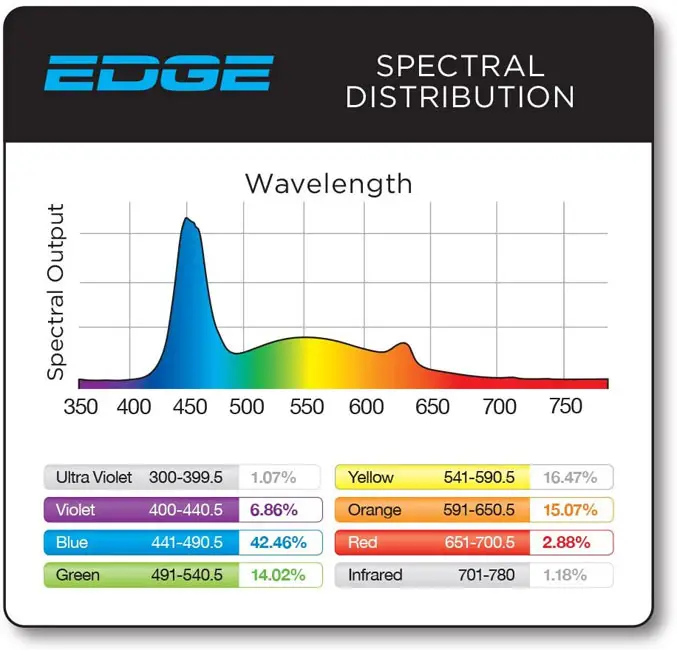In a terrarium, creating a miniature plant world is an exciting way of gardening. It also looks very artistic where we allow plants to form a unique small ecosystem in an airtight container. Almost without much care required, they can keep themselves in good condition.
Nevertheless, even though plants in terrarium require very little care, but still need light to survive. Many people who are interested in growing plants in the terrarium tend to have issues with the light. Many are not sure how much light actually does a terrarium need.
If you also have the same question, then I would try to answer this question for you. Generally, most plants will need 8-12 hours of light a day for consistent photoperiod in a terrarium. The lights that you should use are the indoor grow lights and not direct sunlight.
Do not expose your terrarium to direct sunlight.
It would help if you avoided your terrarium to expose to direct sunlight completely. Even having a few minutes of direct sunlight are enough to kill the plants inside your terrarium.
Having indirect diffused daylight is okay but definitely not direct sunlight. Direct sunlight will cause the plants and critters to die inside the terrarium. This is known as the severe greenhouse effect that is caused by the closed terrarium.
Do Closed Terrariums Need Sunlight?
The moss and other plants that you put in the terrarium do not require strong sunlight throughout the day. You may choose one of the following lighting methods for your terrarium.
- Bright natural scattered indoor light throughout the day.
- 1-2 hours of diffuse sunlight during sunshine or sunset. (the main purpose of getting a little sunlight is to sterilize and maintain the ecological stability in the terrarium)
- Normal desk lamp irradiates for 6-8 hours.
As long as the light is not too bright and too strong, it can basically meet the needs of plants. You should completely avoid your terrarium to receive strong and direct sunlight because the plants in the closed terrarium are all shade plants. And direct sunlight will cause the plants to dry out and wither.
Is you can use normal Light for the Terrarium?
Incandescent lights are definitely cannot be used because it emits a lot of heat and can burn the leaves of the plants. At the same time, the LED light generates very little heat and will not burn the leaves.
Even though normal LED lights can also be used as grow light, they normally only have white color, which is not good enough for terrarium plants. The warm white LED only carries a little blue and red light, while the cool white LED has very little red light.
Therefore, this is the reason we need to buy the special LED grow light because it will carry with sufficient blue and red light.
Do I Need Special Light for Terrarium?
If you think a normal LED is good enough to serve the light for your terrarium, then you can go ahead and use it. If you think the normal LED light is not good enough, you may consider getting special indoor grow lights.
I like to use LED light because if compared to other types of light bulbs like incandescent or fluorescent lights, I can get the following benefits:
- Low power consumption
- Very long-lasting
- They are available in many different shapes, sizes, and luminosities.
- Not susceptible to breakage like glass bulbs.
- Often run at low temperature (depends on the design)
If you are using LED grow lights to provide light for your terrarium, it doesn’t matter if it’s day or night. You can go just on the light at your convenience time. For me, I generally turn on my LED lights for a photoperiod of 10 hours every day. I normally will on the light from 10 am to 8 pm.
To ease my task, I got to use a timer and set the time for the light to turn on and off so that it just kind of auto where I no need to worry I will forget to switch on or off the light.
I need to set the time so that the plants in my terrariums will have a consistent photoperiod of light and darkness every day. This will ensure the plants can engage in photosynthesis and respiration, which will keep the plant remain healthy.
In this day, timers are very cheap. You can get one from many places for less than $10. It definitely an indispensable device for me. Of course, if you can turn on and off the light by following your own timetable, then you will no need to have a timer.
What Kind of Lighting Does a Terrarium Need?
When placing your plants into a terrarium, light is one of the important reasons that hinder the health of plants, especially some plants that have a high demand for light.
At this time, it is ideal for you to use indoor grow lights to provide the light energy required for photosynthesis to plants, but many people still wondering whether the grow light is effective enough?
LED Light – Ideal Indoor Grow Light
This is because traditional sodium lights have high power consumption, low lighting efficiency, and a short lifespan. While LED grows lights are ideal light sources, but the price is relatively higher.
According to a research report known as “Global LED Plant Lighting Market Share, Strategy and Forecast from 2015 to 2021“, LED lights are cheaper and more energy-efficient than other similar products.
Therefore, LED lighting is being rapidly adopted because LED grows lights can effectively promote plant growth and have been widely used by many people worldwide.
LED indoor grow light is an artificial light source that uses LED (light-emitting diode) as the luminous body to meet the lighting conditions required for plant photosynthesis.
If we classified the light by type, it should belong to the third generation of plant supplement light! For plants with insufficient sunlight, this kind of light can act as sunlight to grow and develop normally or better.
How To Choose The Right Grow Light For Terrarium?
Different brands of LED indoor grow light have different brightness. The spectrum of the LED indoor grow light is designed according to the needs of plant growth.
The required spectral range of the grow light is 400-700 nanometers, that is, from blue light to red light. Getting a 10-12 watts overhead LED light with a length of about 5-8 inches above the setup should work fine. Full-spectrum aquascape LED lights are even better because they will mimic the condition of natural daylight.
I bought some indoor grow lights recently, and I have done a lot of researches before buying them. I have some questions beforehand, and I tried to find out later on after learning something about the indoor grow lights. I think you may have similar questions if you are looking for suitable indoor grow lights for your terrarium.
Before that, I really have no idea how to choose the right LED grow light. Besides, I am not sure if an LED light can replace sunlight, and can the plants in the terrarium not need sunlight at all?
So I researched the internet, and I asked the shopkeeper where I bought the lights. After all my questions being answered, finally, I have figured out which light I should actually go for.
When we choose the indoor grow light, we may see something written like a full spectrum in the description. What it means is the light is designed to mimic the spectrum of sunlight.
But in fact, the wavelength of these full-spectrum lights is generally the wavelength of visible light, which is between 380-780 nanometers and does not include ultraviolet and infrared.
We need to know that plants do need ultraviolet and infrared to grow. Therefore, the full spectrum written in the description does not exactly imitate sunlight. But it can be used as a supplement for a terrarium that lacks sunlight. We need to know that it will not be able to replace sunlight completely.
Why did grow light got so many different colors?
There are many different lights available, including blue, red, orange, green, and yellow.
You may wonder why there are so many different colors being available. Well, actually, different colors represent different spectrums. And different brands of LED light will carry different spectrums as well.
However, blue and red light are account for the largest proportion. This is because blue light has a wavelength of 400-470 nanometers, which can stimulate plants’ seedlings, leaves, and roots. At the same time, the red light has a wavelength of 630-660 nanometers which can stimulate seed germination and plant flowering.
For different plants, the wavelengths that they need are different. Therefore, you need to know what plants you put in your terrarium, and then you can decide what color of LED lights you should buy.
Nonetheless, if you want to save the hassle, you may buy a mixed wavelength LED light. I also end up buying a mixed-wavelength LED grow light. In addition to the blue light and the red light, this light also added yellow-green light. Taken together, the color is more natural and is suitable to be used on different plants.
Distance Between The LED Light and the Terrarium
We need to know what is the ideal distance we should put our LED light between the terrarium. We also need to know what is the ideal brightness for the plants.
Generally, the distance between the light and the plant is 40-75mm. The closer the light is, the better the photosynthesis will be.
For this, we need to know about PAR (Photosynthetic Active Radiation) value for each light. It is how much light a plant can absorb in the visible light range through photosynthesis. Some LED lights will not indicate PAR, but they use PPFD (Photosynthetic Photon Flux Density ) instead. The PAR and PPFD are too scientific to me, so, to make it simple, I know the higher the PAR/PPFD number, the better the light going to be.
Different Plants Have Different Lights Requirement
You need to understand that other than the beauty of plants, the compatibility of plants is also important.
Compatibility means that some plants need more light, some need less light, some need more water, and others need less. If you have non-compatible plants in your terrarium, some plants may end up dying due to having too much/less light or too much/less water.
Therefore, before planting combined potted plants, you must first understand the characteristics of the plants. It is best to put the plants with similar needs together, which is easier for you to take care of.
What plants are suitable to put in a terrarium with indoor grow light?
The most common plants for terrarium are foliage plants, such as reticulate grass and Ficus pumila, which are suitable for closed terrarium and are easy to grow.
For nutgrass, the plant is small and exquisite, the veins are clear, and the texture is well-proportioned; Ficus pumila has beautiful leaves with irregular white markings on the edge of the emerald green leaves. They look unique.
Actually, reticulated grass is not 100% suitable for a closed terrarium. If it is closed for a long time and not opened to breathe, excessive moisture in the glass may cause the leaves to rot.
I usually use reticulate grass and Ficus pumila and mix them with moss. If you want to make a large terrarium or add some ferns inside, you will need a larger glass container because ferns tend to grow very fast, and they will need a relatively larger space.
In summary:
You should keep your terrarium in a bright area and avoid direct sunlight go through indoors. Because the plants inside the terrarium will be injured when exposed to direct sunlight.
Instead, you can use LED or fluorescent light for the consistent photoperiod of the plants. You need to be on the light for about 8 to 12 hours every day.
Also read: Aquarium, Terrarium, Vivarium, Riparium, Paludarium, Solarium and Bioactive
Did you find this post useful? Would you like to get back to it later? Save THIS PIN below to your plant gardening and terrarium boards on Pinterest! Thanks 🙂
